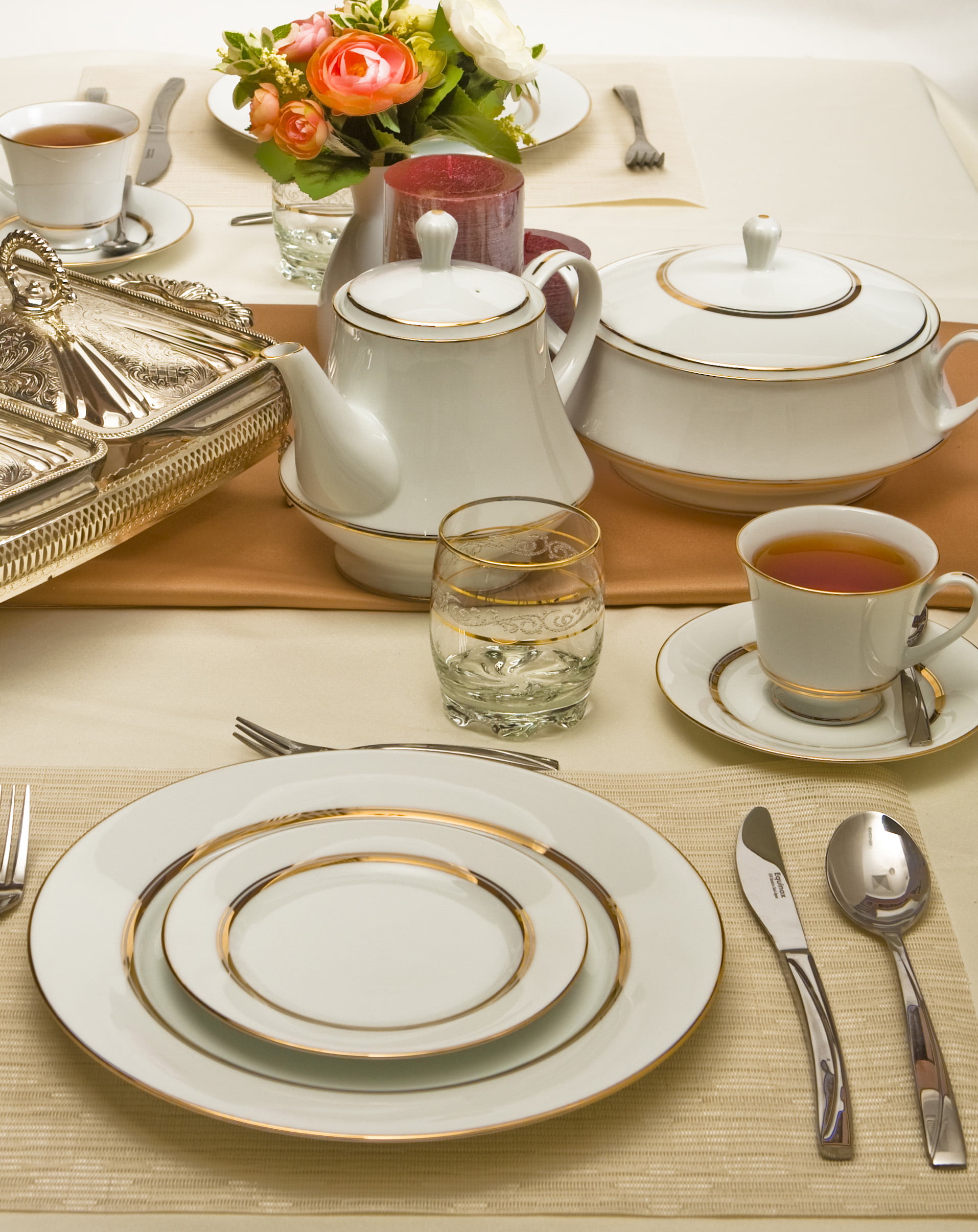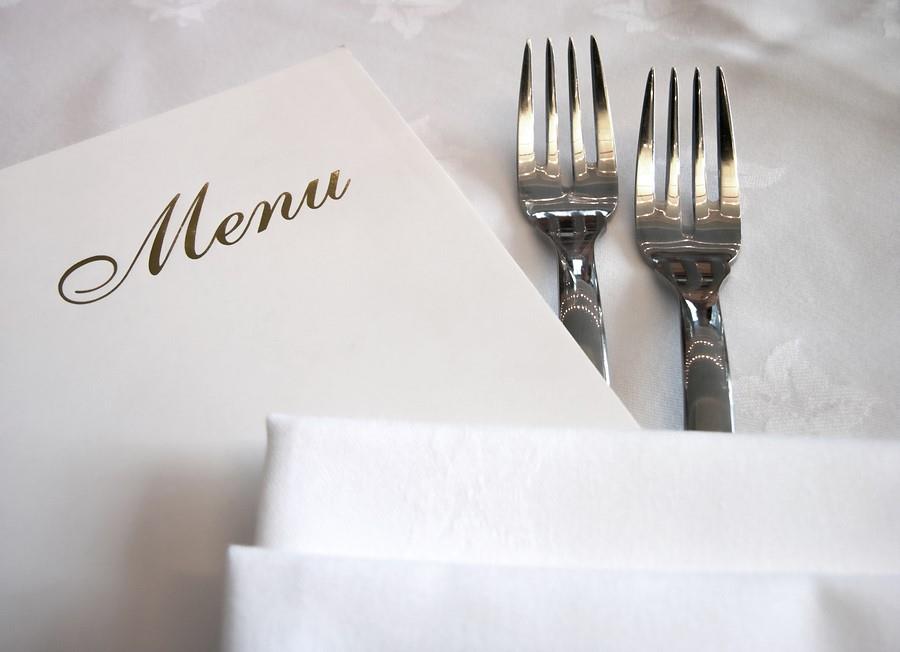For Breakfast or Lunch:

Start with a dinner plate, soup or cereal bowl (always optional), bread & butter plate (for toast, bagels, etc.), and a cup & saucer for coffee or tea. For the flatware, use a 3-piece place setting: dinner fork, dinner knife and teaspoon. The napkin should be placed on the left side of the fork. Complete each place setting with either a juice or beverage glass.
The Dinner or Supper Setting:

The dinnerware placement is similar to what’s used for the breakfast and lunch setting. The salad plate can be brought to the table if needed. For flatware, use a 5-piece place setting; salad fork, dinner fork, dinner knife, soup spoon and teaspoon. The napkin should be placed on the left side of the forks. The table should be set with both a wine glass and a water or beverage glass. The cup & saucer can be brought out at the end of the meal if coffee or tea is served.
Formal Dinner (which includes a soup course):
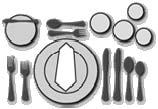
Set the table with a bread & butter plate, a service base plate and dinner plate. If your pattern doesn’t include a service plate, try being a little creative and use a metal tray or glass underliner. For flatware, use dinner fork, salad fork (served after the entree), dinner knife and soup spoon. The butter spreader may be placed on the butter plate.
A teaspoon can be placed on the saucer with the coffee cup later. The dessert spoon and dessert fork may be placed above dinner plate. To add some elegance to your table setting, consider folding or fanning your napkins and place them in the center of the dinner plate or in one of the wine glasses. Add the glasses for red wine, white wine and water, as well as a fluted champagne if needed.
Tips On Setting The Table:
• Allow at least 28 inches width for each place setting
• Keep your tableware approximately one inch from the edge of the table
• All knives should be placed with the cutting edge toward the plate
• Arrange all of the flatware in order it will be used, working from the outside toward the plate for each of the courses served
• If you serve a salad after the entrée, then place the salad fork next to plate
• Glass placement: from right to left, white wine, red wine, and beverage
• Champagne may be placed behind red and white
• A cocktail fork is always placed to the right of the soup spoon unless it’s served with the seafood cocktail
It is very important to create a good table setting, a simple yet elegant design can give off a
very good impression to first time guests, follow the links below to create a basic but professional
looking table.
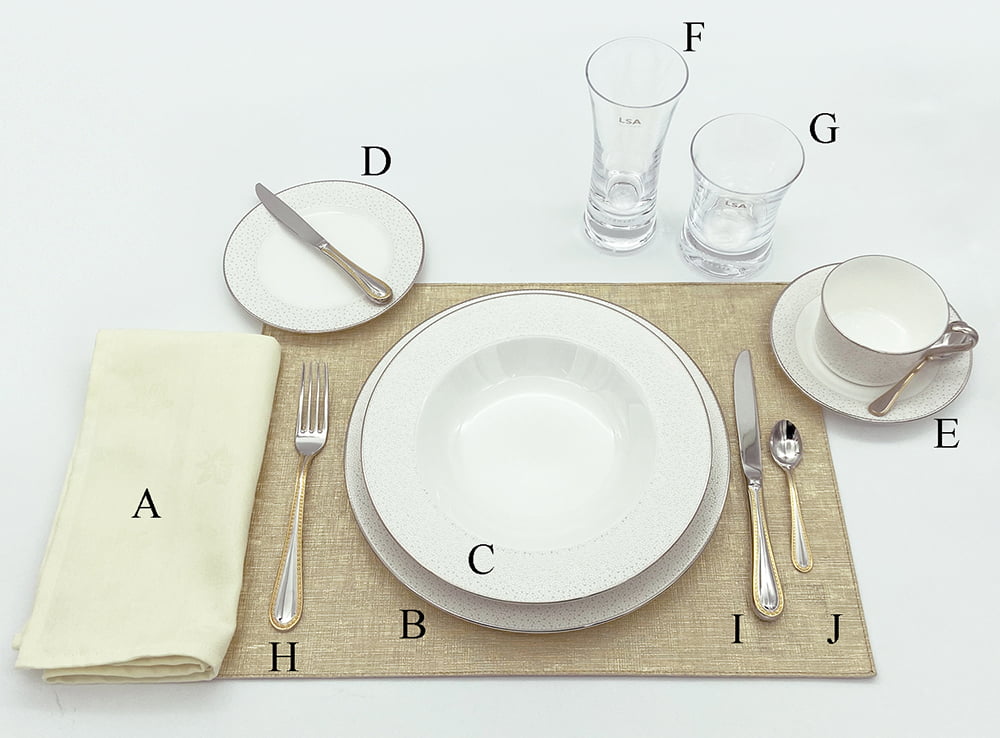
Table Setting – Breakfast
A. Napkin
B. Luncheon Plate
C. Cereal Bowl
D. Bread and Butter Plate
E. Cup and Saucer with teaspoon
F. Water glass
G. Juice glass
H. Fork
I. Knife
J. Teaspoon
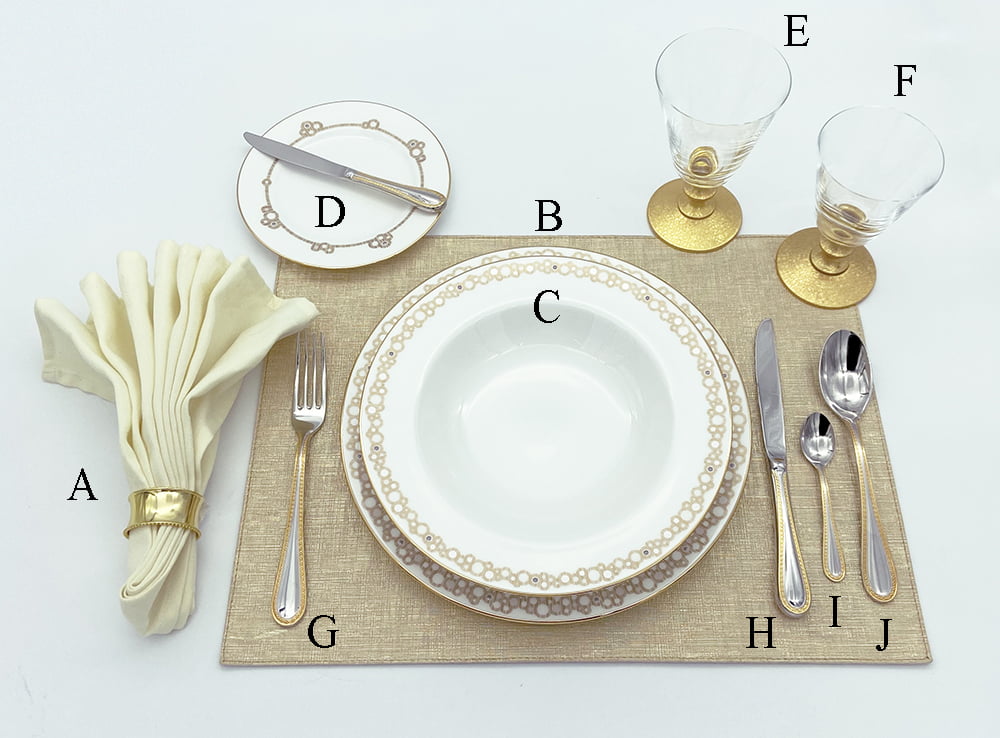
Table Setting – Lunch
A. Napkin
B. Luncheon Plate
C. Soup (or other first course plate) on a liner plate
D. Bread and butter plate with butter knife
E. Water glass
F. Wine glass
G. Luncheon Fork
H. Knife
I. Teaspoon
J. Soup spoon
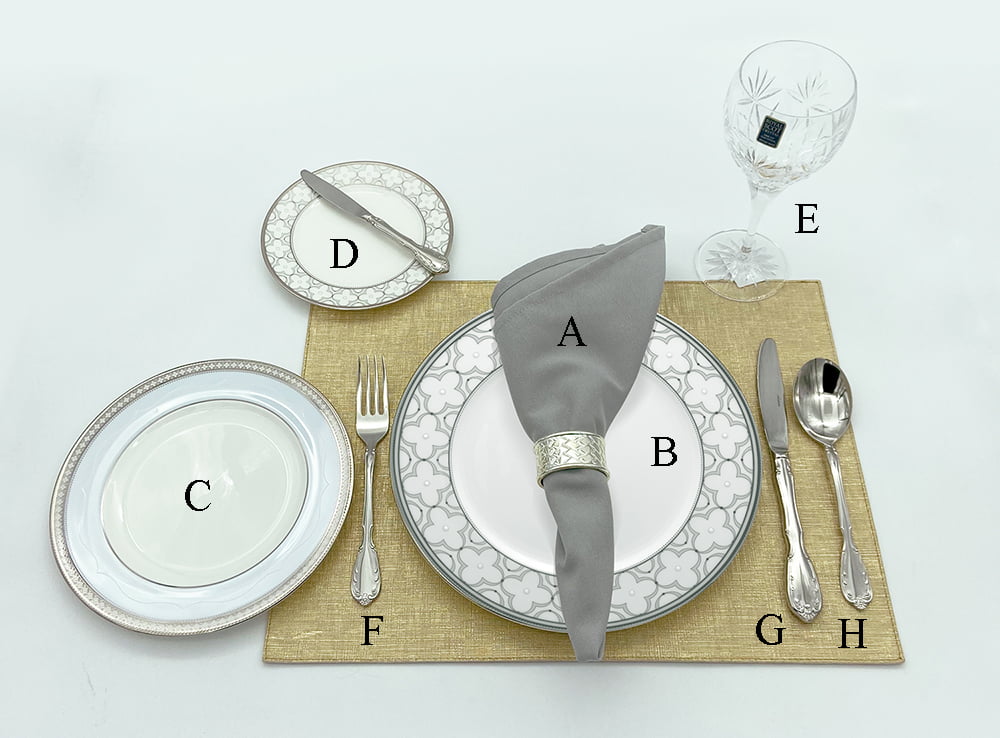
Table Setting – Family Dinner
A. Napkin
B. Dinner Plate
C. Salad Plate
D. Bread and Butter Plate with butter knife
E. Water glass
F. Fork
G. Knife
H. Teaspoon
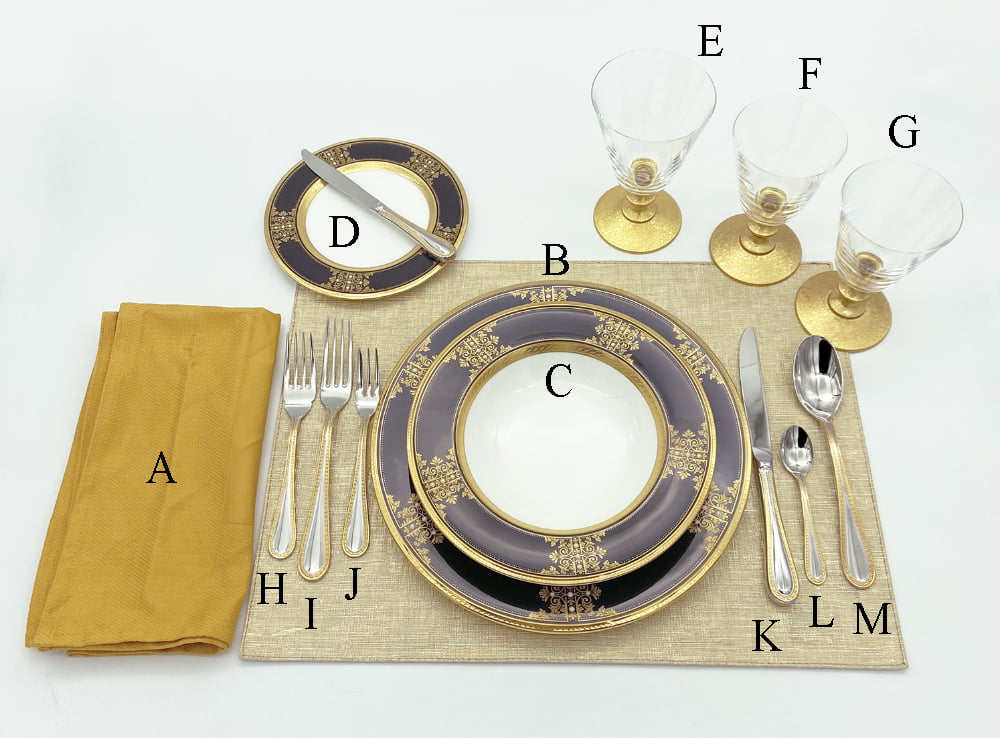
Table Setting – Formal Dinner
A. Napkin
B. Service plate
C. Soup bowl on a liner plate
D. Bread and Butter Plate with butter knife.
E. Water glass
F. Wine glass
G. Wine glass
H. Salad Fork
I. Dinner Fork
J. Dessert Fork
K. Knife
L. Teaspoon
M. Soup Spoon
Table Setting Guide from Basic Diner to Formal Dinner
By “The Bee’s Knees”
